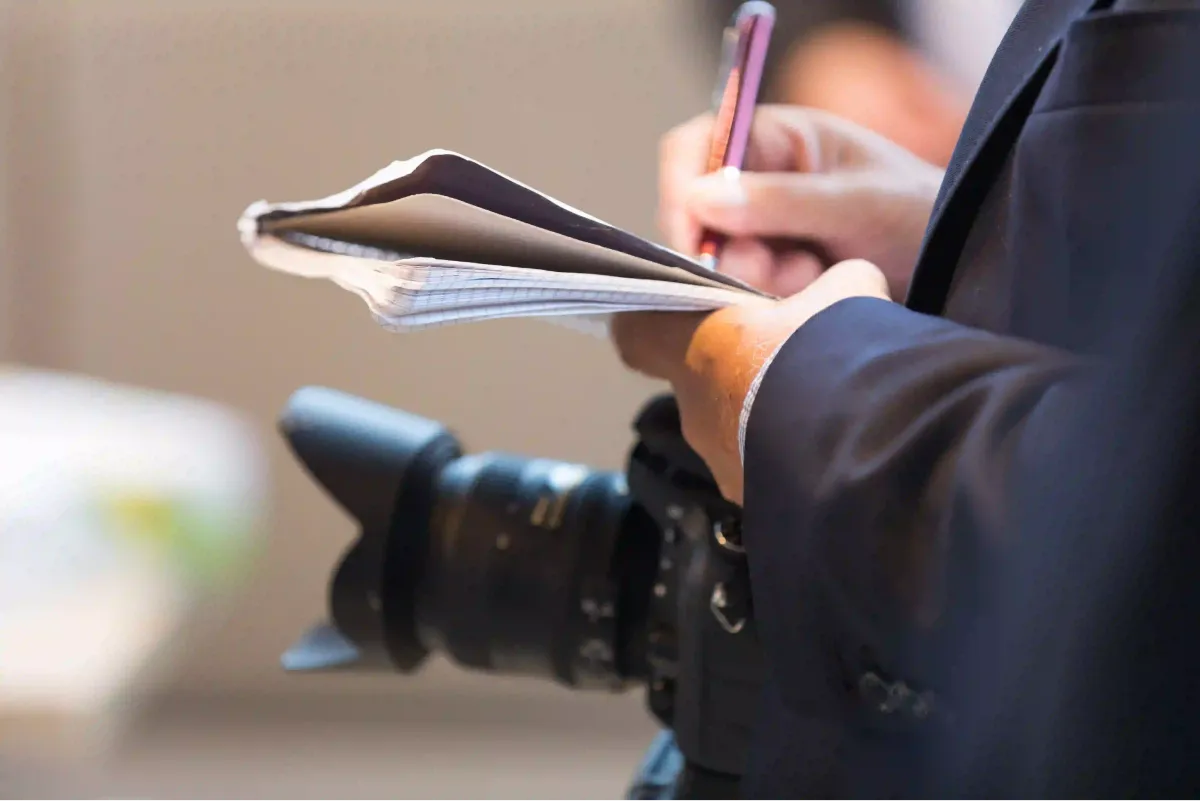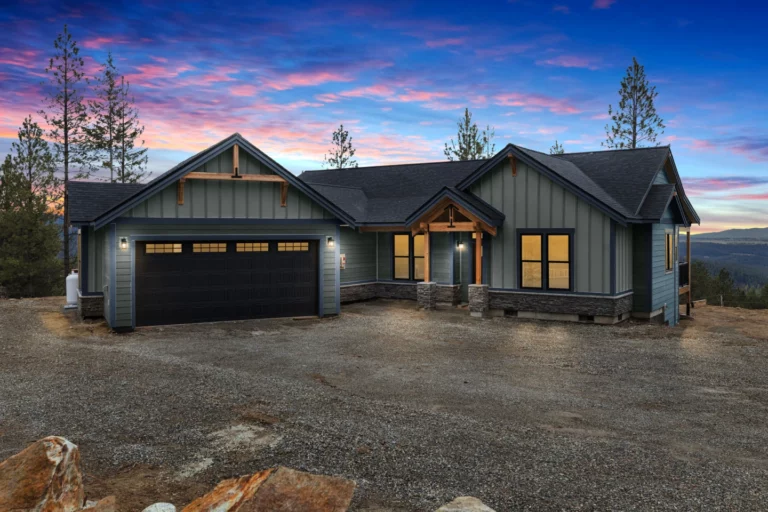You always wear your camera around your neck no matter where you go. Friends and family often tell you: “If you love that camera so much, why don’t you marry it?” And you would, if you could.
If you love capturing candid moments everywhere and want to take your photography skills from a hobby to a realistic career, consider becoming a photojournalist. They’re all about being observers and capturing moments — a local festival, a sporting event, or even a local opening reception for a new art exhibit.
Photojournalists are all about telling stories the world needs to see. You can become a freelance or a staff photojournalist for a publication. Still hesitant? Get the essential steps for becoming a photojournalist, find out what they do, and learn about the current outlook on the industry.
What Do Photojournalists Do?
Photojournalists capture images of local, national, or international news for publications, news websites, and social media pages. Some work locally while others travel globally to numerous atmospheres, from red-carpet gatherings to war zones or soccer matches.
Photojournalists can capture numerous events such as parades, festivals, musical or theatrical performances, sports, and more. Some photojournalists are assigned to follow subjects everywhere they go, including politicians, world leaders, musicians, actors and actresses, and more.
Types and Examples of Real-World Photojournalists
Photojournalists can work freelance and pitch their stories or be employed by different types of media, from newspapers and magazines to online publications and TV or streaming news stations. Here are a few types of photojournalists and some real-world examples of each:
- News/breaking news: News and breaking news photojournalists capture moments as they happen, from earthquakes and other national disasters to election night results and wars. Carolyn Van Houten is a breaking news photojournalist for the Washington Post.
- Features/entertainment: Features or entertainment photojournalists, not paparazzi, photograph feature and entertainment subjects, such as art exhibits, red carpet moments for premieres or award shows, festivals, and more. Neal Preston is an entertainment and professional musician photographer.
- Sports: Sports photojournalists capture all the best sports moments, from passes and touchdowns to mascot dances and cheer squad routines. Sports photojournalists are all about getting the action. Jessica Taves is a Colorado-based, freelance sports photojournalist and photographer.
- Documentary: Documentary photojournalists are assigned to follow subjects in their everyday lives for a certain amount of time from a few weeks or months to a whole year, depending on the subject and scope of the project. Documentary photojournalists stay in the background and snap candid moments of their subjects. David Burnett is an example of a documentary photojournalist.
- Obituary: Obituary photojournalists focus on capturing moments of death, loss, grief, and legacy — they typically shoot at memorials and funerals of those who’ve passed. Christopher Furlong of Getty Images Europe photographed Queen Elizabeth II’s funeral in 2022.
No matter the type, photojournalists are always out and about capturing moments.
How to Become A Photojournalist in 10 Steps
Being a photojournalist requires blending your artistic passions with journalistic integrity to tell meaningful stories and capture real, human emotions. Finding mentors, solidifying your beat, building interviewing and people skills, and networking are just some of the ways you can make a lucrative career as a staff or freelance photojournalist.
1. Learn From Established Photojournalists
For writers, the best way for them to grow is to read every book they can get their hands on. This idea also applies to photojournalism.
You may be a skilled photographer with expert knowledge of your camera settings and lenses, but mastering the art of photojournalism requires learning from others. Studying the works of past and present photojournalists allows you to see what works (and what doesn’t work).
Take some local in-person or remote photojournalism classes at your local community college or university. You can also sign up for online classes like MasterClass, Udemy, or LinkedIn, for more pointers and hands-on assignments.
Seek out local freelance or staff photojournalists and ask them to be your mentor or to work with them as an assistant or protege to learn their techniques and build your network.
Pro Tip: Visit sites like National Geographic, CNN, Getty Images, and other news websites, and spend time looking at editorial photos. Take notes about the images you like and dislike. Ask yourself if the images tell a story or make you feel specific emotions.
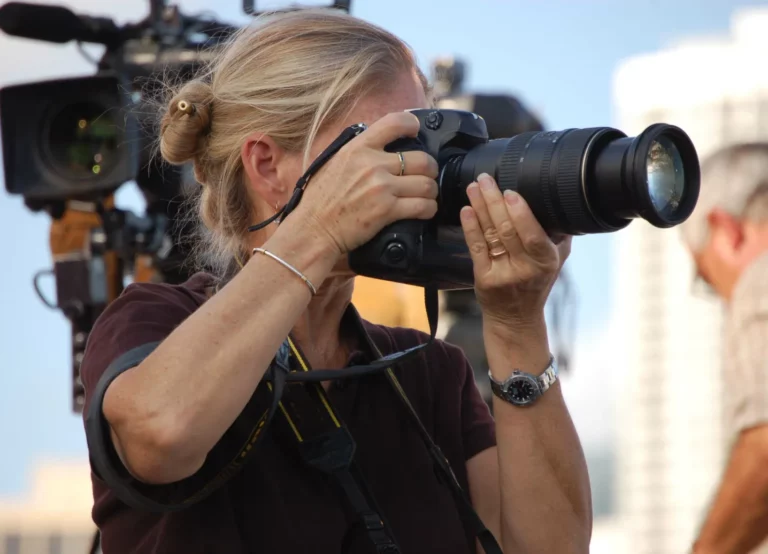
2. Develop Journalistic Camera Skills
Building photojournalistic camera skills means learning your settings and developing a journalistic mindset — always having your camera present and being mindful of the world around you so that you’re ready to capture important moments.
Some photojournalism techniques include:
- Get candid moments (not staged): Photojournalism is about capturing moments as they happen. You’re not asking subjects to pose for you or to look a certain way. You’re taking snapshots of authenticity — not a magazine cover.
- Attend newsworthy events: Get into the habit of showing up at different events — marches, rallies, parades, festivals, and so on.
- Ask permission before shooting at events: For events like concerts, venue performances, or other special events, reach out to the event organizers or venue owners and ask for permission to photograph there. You may have to fill out press photo contracts or pay a fee, but asking ahead of time helps you avoid getting tossed out of events. Some venues may have hard rules about photography, but asking permission may soften them up.
- Shoot from different angles: Get close to subjects and take shots at different angles, such as behind, from the side, or while kneeling down on one knee. Different angles show your subject from different perspectives.
- Edit your work lightly: Adjust brightness when editing photos on photo editing software. Don’t crop or erase things from your photo. If you’re not pleased with how the photo looks before uploading it to the software, it’s best to toss it. Plus, you’re betraying your journalism integrity when you over-edit photos.
- Carry backup gear: Always have spare memory cards, lenses, batteries, and another camera body when out on shoots. The last thing you want is for a photo-worthy moment to happen and you’re all out of memory cards and batteries.
- Have patience: Photojournalism is all about waiting for the right moment and being ready for anything to happen. Sometimes, you may wait hours or days before something good happens. If patience isn’t your strong suit, you may need to find another photography niche to work in.
Journalism holds reporters, photographers, editors, and more with a specific code of ethics that includes seeking the truth, minimizing harm, acting independently, and being transparent. The industry frowns on those who lie or fabricate stories for attention and financial gain (although some people have gotten away with it in the past).
3. Get Photographers Insurance
You’re probably wondering, “Why do photojournalists need insurance?” Photojournalists, especially freelancers, work independently. If injuries or lawsuits come up while you are shooting something, you’d be stuck with paying the bills or legal fees out of pocket.
For example, you may be filming a cosplay convention. You set up a tripod with another camera on it. A cosplayer or attendee trips over the tripod and sprains their wrist or ankle. If you don’t have insurance for photographers, you could be stuck paying out of pocket for pricey medical bills.
Or, you decide to market your photojournalism skills with photos of subjects you took a year or so ago for your ads. However, some of those in the images said you didn’t ask them for permission to use their face or likeness for your marketing strategy. They can sue you for breach of privacy or commercial use because you’re using their likeness to “sell” your skills.
Also — those venues where you want to shoot? Many will require you to provide proof of insurance before doing work (freelance or otherwise) on their premises
While some publications or media may have insurance for their staff, equipping yourself with photographer insurance provides a safety net in case things go wrong. You also boost your credibility and reliability because you edge out your competitors who don’t have photography coverage.
4. Find Your “Beat”

Reporters and photojournalists have “beats” or niches that they pick themselves or are assigned to by editors. Some different types of beats include:
- Hard news
- Breaking news
- Features/entertainment
- Sports
- Obituaries
- Arts/culture/lifestyle
- Politics
- World conflict
- Finance
- Columns
- Police/crime
Once you’ve selected your beat, stay up to date on everything that’s happening in that niche.
For example, if you’re on the art beat, check out local art galleries or museums for any upcoming exhibits or artist residencies. Reach out to the gallery and ask if you could spend some time picking the brains of curators about the kind of art the museum showcases, artist residencies, and any future events.
Or, if you’re on the crime beat, look at previous crime stories in your area and look for trends. Which crimes are happening the most and where? You could even ask local police officers for a ride-along to see what they see.
Current events keep photojournalists in the know. Always pay attention to what’s happening in your beat locally and globally. Some stories may help you develop ideas that you can pitch to your editor.
Consuming the news fuels your journalism mindset and allows you to observe other photogs in action. Stay up on the news by:
- Listening to newsy podcasts on Spotify, Apple Podcasts, Pocket Casts, and more
- Watching local news or entertainment news channels
- Subscribing to news outlets like The Washington Post, USA Today, or The New York Times
- Getting push notifications on your phone from media apps (i.e., USA Today, CNN, CBS, ABC, Time, BBC, Huffington Post, and more)
- Walking around, observing your area, and talking to people in your community about events or issues — local residents are often open to talking about what’s going on in the area
5. Write Captivating Captions
Photojournalists need to know how to write eye-grabbing captions to match the mood and energy of their photos, and even how to make it more likely for their work to get found online. Plus, many organizations have specific photo captioning rules. Typically one to two sentences are ideal followed by the name of the photojournalist.
Let’s say you captured photos of a burning apartment building somewhere with families sitting on the sidewalk looking sad. Your caption should showcase this emotion.
Or, you may be photographing a woman smiling proudly while standing next to a portrait she painted at the opening of an exhibit at an art gallery. Describe her sense of pride and accomplishment in your caption.
You can also boost your work by including some basic search engine optimization (SEO) in your captions. For example, referencing the gallery name, city, and artist by name makes it more likely for people to find your work when searching with those keywords.
In photojournalism, photos tell the story while captions give context.
6. Master Basic Interview Skills
Photojournalism isn’t a one-sided profession. You also need to know how to interview and actively listen to people to get great photos.
You don’t have to play the podcast host, TV news anchor, or radio personality. But you do need to ask simple, open-ended questions that can’t be answered with a simple yes or no response, like:
- How are you doing?
- How is this (event, person, or situation) affecting you?
- Why does this (event, person, or situation) affect you (positively or negatively)?
These, and other questions, can help you build trust among your sources and subjects. Interviewing and actively listening allows sources to open up about the situation at hand and feel (at least a little) more trusting about you photographing them.
Plus, softening up sources with your questions can help them open up when reporters officially interview them.
7. Learn How to Pitch a Story
Capturing photos, learning from mentors, and getting comfortable talking to and interviewing people are only part of the battle. You must also know how to develop ideas and flesh them out into solid pitches for editors of magazines, news websites, and more.
So, how do you pitch your photo stories and ideas to editors?
First, research the publication or website you want to photograph for. Look at photos, articles, and materials from the past year. if you’re pitching something in February, look all the way back to February of the previous year.
What stories have they told? What angles do they think interest their audience? Have they already covered this type of story thoroughly?
Let’s say they haven’t done your idea, giving you all the right feels. Here’s how you can build your idea into a solid pitch.
Learn About the Readers and Follow Guidelines
Some publications have specific guidelines for how to pitch, such as Mental Floss. Others don’t. The best approach you can take for publications without specific pitching rules is to understand the publication’s readers and see what guidelines or instructions they offer around pitching your work.
What readers does this publication or news site cater to? Millennials and Gen Zs, Baby Boomers, or local college students? Stalk the publication’s social media channels (especially their LinkedIn and Instagram pages) and review their followers and commenters on specific posts.
Learning about the readers helps you know where your story is going and can help you craft a satisfactory pitch.
Keep Your Pitch Simple
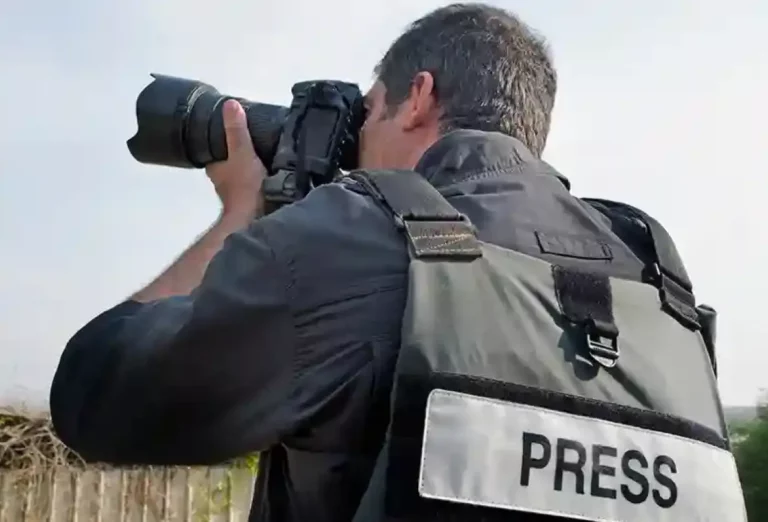
Most editorials and publications prefer succinct summaries of your stories of just one to two paragraphs long.
One paragraph details what the story is about and why the publication should care about it with a specific news angle (i.e., a man or woman attending the same local comic con from childhood to adulthood in different costumes, or a woman who emigrated to the U.S. writes a hit song paying homage to her home country that suffered a massive tsunami).
The second paragraph describes who you’ll be photographing and why you’re the best photographer to do this assignment. Or, in the case of work you’ve already captured, why you’re qualified to tell this story in images.
One way to think about this is to write your pitch similarly to how you would write the beginning of a press release — capturing the who, what, why, and a unique angle that would appeal to the publication’s readers in just a few sentences.
Attach Sample Work
Attach links or physical attachments of your photojournalism portfolio to the pitch email to showcase your best work. If you’re feeling extra daring, consider adding the latest version of your resume so the editor can understand your photojournalism background.
Pro tip: Build your portfolio according to the publication you’re writing for. For example, if they cater to news stories, add your news images. If they’re into entertainment pictures, add your best entertainment snapshots.
Don’t Pester Editors
Editors, like us, have lives outside of their job titles. They see hundreds of, if not more, pitches a day. Sometimes publications will never get back to you, and that’s ok. But don’t bug editors to death about whether or not they’ve seen your pitches. They may consider this too annoying and aggressive.
Give your editor at least two or three weeks time to sort through everything. If you haven’t heard back in three weeks, politely reach out and ask about your pitch. If you still don’t hear anything after two weeks, it’s probably safe to assume they’re not getting back to you.
You can always send your rejected pitch to another place for review if it fits the audience and editors’ needs. Or, start from scratch again and pitch different ideas. Just, don’t send too many ideas too frequently.
8. Source Jobs
Getting a photojournalism job can be tough if you’re not looking in the right places. You can search for different photojournalism staff jobs or freelance opportunities in several different locations.
Here are a few job-sourcing sites and organizations you can try:
- Society of Professional Journalists (SPJ)
- JournalismJobs.com
- National Association of Black Journalists (NABJ)
- Media Bistro
- Asian American Journalists Association (Members only)
- iHispano
- Investigative Reporters and Editors — and more
Building a network of reporters, editors, public relations (PR) teams, and other photojournalists can also be a great referral source for potential staff and freelancer jobs.
9. Meet Deadlines
Becoming a photojournalist requires meeting deadlines. Especially with stories that are time-sensitive vs. evergreen pieces that remain relevant year-round.
Some photojournalists juggle multiple assignments with different timelines and deadlines. The best way to approach your job is to set priorities and work on your time management skills. If one story is due by the end of one week and another is due in the middle of the following week, which one are you working on first?
Sometimes life happens, and things go wrong, causing you to miss your deadline. If you ever feel like you’re in a jam, it’s important to touch base with your editor as soon as possible to ask for an extension or to turn the piece in earlier than expected.
10. Network
Journalism is a competitive industry with competitive publications and news organizations fighting to be first in breaking stories. However, this field is also about networking and making friends with the right people.
Networking with other photojournalists allows you to exchange tips and learn different techniques that you weren’t aware of before. For example, they may like having two cameras around their neck — one has a zoom lens and the other has a regular lens. This keeps you from interchanging lenses all the time. You may consider trying this method.
Some reporters carry cameras around when they don’t have access to other photojournalists or are strictly freelancing and want to build their skill set. So you can also share your techniques and insights with other journalists if they’re interested.
Meeting and working with great editors can reap numerous benefits for your career. If you constantly meet your deadlines and deliver high-quality work, editors will hold you in high regard and recommend you for full-time positions if you’re a freelancer or introduce you to other editors at other publications that you could shoot for.
PR (public relations) personnel can also be excellent to work with. They’re people who are responsible for providing journalists with the information needed to complete a story, such as press releases and quotes from stakeholders, CEOs, and other important figures about specific events, company news, and more.
Building your network with these and other industry leaders can always give you good story ideas and provide word of mouth for ideal job opportunities.
Is Photojournalism a Good Career?
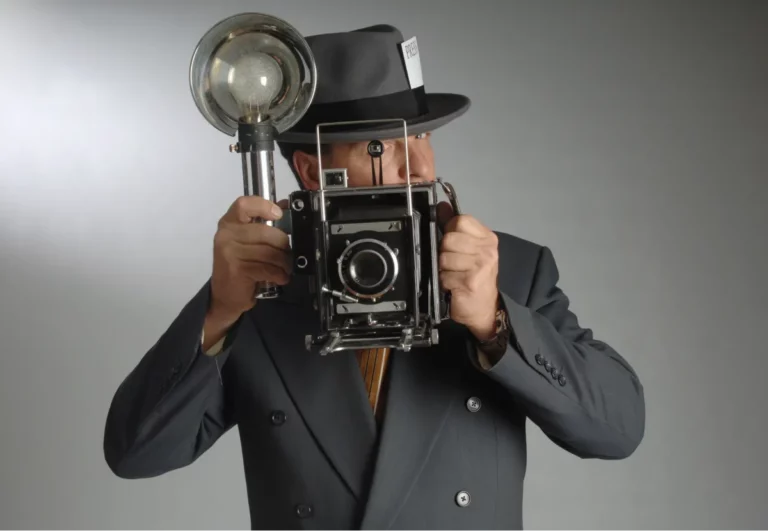
Photojournalism has its uncertainties. But the market is always in search of creative photographers who can tell stories with their images.
Colorado sports photojournalist Jessica Taves spoke about meeting numerous people with every photojournalism assignment she had.
“I find that the most rewarding part of being a photojournalist is having the opportunity to meet so many inspiring people and [tell] their stories visually. I have to say it has been an amazing experience and I have been lucky to photograph so many wonderful people and events.”
Taves added: “The photojournalism industry has changed so much since I took my first assignment. It is important to keep current with all the changes and technologies that are required to be a photojournalist. It is a tough journey but also very rewarding.
For all those aspiring photojournalists, the most important thing is to stay confident in your craft, and with everything, there will be good days and bad. When you find your stride and those stories that make a difference nothing is more rewarding.”
Let’s review the photojournalist industry by the numbers, including salaries and best places to work.
Photojournalist Salaries By the Numbers
According to ZipRecruiter, the average photojournalist’s salary is $44,670. ZipRecruiter also named the 10 best cities for photojournalists and their respective salaries:
- Richmond, CA – $55,959
- Bellevue, WA – $55,141
- Sitka, AK – $53,885
- Santa Clara, CA – $53,181
- San Lorenzo, CA – $52,994
- Pasadena, CA – $52,875
- Soldotna, AK – $52,784
- Belgrade, MT – $52,251
- Federal Way, WA – $52,233
- Palmdale, CA – $52,218
However, if you work as a freelance photographer, the average salary is $130,079 (per ZipRecruiter). ZipRecruiter also named the top 10 cities and salaries for freelance photographers:
- California City, CA – $172,711
- San Carlos, CA – $165,680
- Nome, AK – $164,471
- Santa Cruz, CA – $160,050
- Menlo Park, CA – $159,819
- Sunnyvale, CA – $157,756
- Livermore, CA – $157,672
- Union City, CA – $157,658
- Arlington, VA – $156,707
- Lafayette, CA – $155,423
Is It Better to Be a Staff or Freelance Photojournalist?
There are two options photojournalists can take: going freelance, or being a staff photojournalist for a publication. The biggest differences between freelance and staff photojournalists are stability and a steady income. Staffers get paid regularly and have access to more equipment and resources because they’re part of a company.
Freelance photojournalists call their own shots and are responsible for getting paid, having the right gear, and looking for clients to pitch ideas to. They are their own business owners, which is not a bad thing.
What Is a Staff Photojournalist?
Staff photojournalists are hired, salaried staff for newspapers and magazines with regular paychecks and benefits.
Pros and Cons of Being a Staff Photojournalist:
- Stability: Consistent work with a set schedule, steady pay, and benefits (something freelancers or contractors can’t always get).
- Constant learning: You’re shooting things almost every day and gaining new learning opportunities along the way.
- More resources: Many publications supply gear, travel budgets, editors, and reporters to make your job easier.
- Less flexibility vs. freelancers: You’re required to show up to your job every day at the same time and work certain beats; plus, you might not be working on shoots that fit the best with your personal interests.
- Unpredictability: You can get pulled into last-minute or surprise assignments and work late hours or weekends, which can impact your life outside of work.
- Limited career growth: You can either take photos, or become a photo editor within your current company or join another publication. The corporate ladder is pretty small if you don’t grow your journalism skills and experience.
Becoming a staff photojournalist is best for you if you want something with more stability and want to know where your next paycheck is coming from.
What Is a Freelance Photojournalist?
Freelance photojournalists are self-employed photographers who work on their own schedules with different clients and different pay rates. They may also have to pitch their work to media outlets in order to get it published.
Pros and Cons of Being a Freelance Photojournalist:
- Flexibility: You get to manage your own schedule and expand your client base to shoot different beats and niches.
- Negotiable rates: Some publications have set pay rates for freelancers, but you can negotiate with editors depending on your skillset and experience.
- Variety: You’re not tied down to one specific publication or beat.
- Income may not be steady: You’re in charge of your clients and finances. There are no steady checks or health benefits. You have to ensure you’re getting paid.
- Pitched work might not get picked up: You’re constantly pitching great ideas or finished work, but getting published or being hired to cover a story isn’t guaranteed.
It’s best for you if you don’t mind bouncing around to different publications and getting several paychecks for your work instead of one. This can also be a side hustle If you have a day job and need extra money.
Common Questions About How to Become a Photojournalist
Do Photojournalists Make Money?
Yes, photojournalists make money. According to ZipRecruiter, the average salary of a photojournalist is $44,670 and the average hourly rate is $21. Some pay rates vary by skills, location, and company resources.
How Long Does it Take to Become a Photojournalist?
There is no set timeline for becoming a photojournalist — but it doesn’t happen overnight. You can self-learn, work with and serve as a mentee for a professional photojournalist, or take classes online or in-person at your local community college or university.
How Do I Become a Freelance Photojournalist?
You can become a freelance photojournalist in several different ways: learn from established photojournalists, build your camera skills, find your photography “beat” or niche, write great captions, master basic interviewing skills — and always meet deadlines.
How Can I Become a Photojournalist for National Geographic?
National Geographic photographers have at least 5-10 years of photojournalism experience, so gaining experience before applying is vital. You’ll need to develop photography skills in underwater, landscape, portraiture, cultural, geopolitics, and aerial photography, according to the website.

